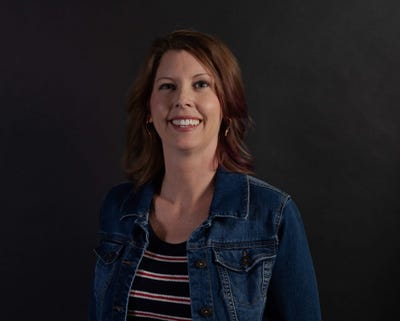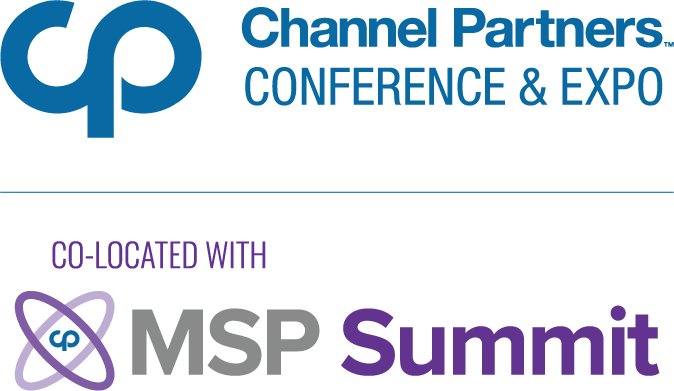VMware Cloud Foundation Head: VCSP ‘Very Stable Now’VMware Cloud Foundation Head: VCSP ‘Very Stable Now’
Broadcom-VMware’s Ahmar Mohammad gives a state-of-the-state update on a year’s worth of transformation for cloud service provider partners.

Almost a year has passed since Broadcom enacted big changes within the VMware Cloud Service Provider program — some of which have stuck, some the chipmaker revoked.
Now, nearly 12 months into that transformation, Channel Futures sat down with Ahmar Mohammad for a state-of-the state conversation. Mohammad serves as vice president, partners, managed services and solutions go-to-market, VMware Cloud Foundation Division at Broadcom. In that role, he works with all manner of partners, from channel and technology to hyperscalers; he has spearheaded many of the adjustments that have taken place within VCSP. (Brian Moats, recently appointed as senior vice president of global commercial sales and partners, oversees traditional reseller and distribution partners.)
On the whole, Mohammad is pleased with where VCSP now stands, and says partners are, too. In this Q&A, Mohammad covers a number of topics around VCSP, including:
Benefits of pricing parity under Broadcom.
How partners are feeling about VCSP changes.
What’s next for VMware Cloud Foundation.
Amazon Web Services’ first-party VMware offering.
Range of opportunity for VCSP partners delivering managed and professional services.
Note that this conversation has been edited for length and clarify.
Channel Futures: Provide a state-of-state overview of VCSP about a year into the changes Broadcom implemented after buying VMware.
Ahmar Mohammad: VCSP is a very, very strategic and important route to market for us. What we intentionally tried to do last year is bring consistency into the program and create a structure that works well across the ecosystem. Now it's a core-based model. And instead of trying to have partners [spread around], we created Pinnacle, Premier, and then had a path for everybody else; [for example], white-label partners basically work into the license of any CSP or any of our Cloud Commerce Managers — think of them like [distributors].
What I'm pleased to share with you is the program is very, very, very stable now. We made the tweaks. Initially, it was a very jarring reaction, because, of course, anytime you make a change, the immediate reaction is, "Oh, here comes Broadcom, raising my prices." There was a lot of [fear, uncertainty and doubt] in the market.
CF: But something changed?
AM: The interesting part was there were a few partners, especially in Europe, that we had some public battles with. … Then once they actually realized [what we were doing], we resolved all of the differences. One of those partners was actually on the stage with me [in Barcelona] telling the customers and partners how brilliant the strategy is, the consistency, and why it opens up new opportunities for them.
His point was why having that price parity across the ecosystem was good for even the CSP partner. Yes, some of the CSPs, depending on the previous contract, their price was higher than before, but … as low as their price was, there was somebody else, like an OEM or somebody or Dell who had even a lower price point, or a telco who would crush them out of the system. So now, including all of the big hyperscalers and telcos and OEMs and CSPs — all have a level playing field. It allows them to differentiate for the value they bring.
That was the point. Not that they were excited and happy that their price was going up, but that it creates the opportunity for them to compete on the merit of the CSP business, which is what I call a strategic advantage for them, compared to even the hyperscalers. So to me, as an owner of the program, it kind of brings a tear to your eye as the dove flies away that, "Oh, my God, this is exactly what we were hoping for. This is exactly what we intended to do, and now we are seeing the result of that."
It doesn’t mean everything is perfect. There are, of course, areas where we could do better, and partners like Expedient and IBM and OVH … push [us on] that. They say, "Hey, you need to fix this, need to help with this, need to help with that." There are plenty. But from a big-program perspective, we are now fairly stable.
CF: So, going back to that stability comment, where does the VCSP program stand?
AM: All of their license keys are swapped … now to measuring cores, and [perpetual] license keys are now subscription keys. I think we’re 94% or 97% complete. We feel very, very good about it. … In a short period of time, eight or nine months, we were able to transform the entire business. And like I said, partners are relatively happier because they are now starting to see what it means for them.
CF: In speaking with some partners recently, I’m hearing similar sentiments. They’re glad to be emerging from a period of confusion and lack of communication.
AM: It’s a very fair assessment. … I think one thing where we fell short was … we could have done a better job of communication, of the why.
CF: So let’s look deeper into 2025. There's talk in Broadcom SEC filings about VMware Cloud Foundation updates coming in, I think, March and July. What can you tell us?
AM: If you look at in the past, VMware was a combination of individual products. We were selling vSphere, VSAN, NSX, Aria – and even within Aria, individual components – and some came from homegrown, some of them came through acquisition, but we managed to keep those individual teams, and managed to keep them as individual products. They were even sold individually in the past. … They did not have the same common identity framework, single sign-on, common security posture, common servicing model, how you update patches and stuff like that. Our customers and partners would say, "Hey, when I patch NSX, this thing breaks and now I have to now patch this together with this and test which version is compatible with what." That life cycle management was really painful. … This was one of the reasons why nobody actually upgraded very often. They all waited for a year, two years, three years of testing before they upgraded because they didn't know what else would break.
So, it will all be integrated under VMware Cloud Foundation 9.0. It’s a platform versus just a combination of individual products. With any software development, it's hard to pinpoint the [exact release] date, right? We announced that [for] sometime in the first half or summer of this year, and we continue to stay on track, but it's hard to pinpoint what date or week we will actually able to ship it.
CF: Talk about the impact you expect a fully integrated VMware Cloud Foundation to have on cloud service providers.
AM: In the past, CSPs had to literally create a hodgepodge cloud. So you’d take vSphere from us and storage from somebody else, and networking from somebody else and all that, and pull it all together and then be the person in the middle who had to provide consistent support to the end customer. And of course, the price point and their overall total cost of ownership became much larger because they were paying Cisco, paying NetApp. They are paying this and that. All those things [will come] together with VMware Cloud Foundation 9.
CF: How does this approach fit into Broadcom’s and Hock Tan’s emphasis on private cloud?
AM: So we look at VMware Cloud Foundation as [letting] the customer choose the deployment modality — whether they want to run it on-prem using hardware from off the shelf or an from OEM, or do they move to the hyperscalers or a managed service provider like Rackspace or Expedia or ThinkOn. It’s up to them. … VMware Cloud Foundation means it's a private cloud experience, and the experience goes with you wherever you choose to deploy it. And that's very unique in the industry.
CF: When you talk about the hyperscalers, I think you’re referring to the license portability announcements made with Microsoft Azure and Google Cloud. What’s going on with Amazon Web Services? There was confusion there.
AM: Let me clarify. So we have a model with Google and Microsoft where we provide the stack to them, they stack up and run the entire service. Then we announced at AWS:reInvent that AWS is now also building a first-party offering that will do very similar to that, where they will take the full VMware Cloud Foundation stack, run it on bare metal, provision it, connect everything together, provision, and then give to the customer to manage it. So basically, private cloud running in an AWS environment.
Now, we continue to operate our own VMware Cloud on AWS offering as well, but that's a more of a managed, fully managed service, automated, life cycle, automated, self-healing. It's like a Ferrari. Not everybody needs it, but the ones who have it love it. It is more expensive than anything else in the market. But it’s full life cycle management; we're doing self-healing, automation. When AWS launches it – they promise end of calendar Q1 – it will be a customer-managed environment. … We expect a lot of customers will love it and it will serve their needs, and they'll be just fine with it.
CF: Let's talk about the entire services opportunity from the VCSP perspective — not just managed services, but professional services too.
AM: VMware Cloud Foundation creates a great opportunity for them. … A lot of our customers now have the full stack already as part of the subscription. Not 100% of them are using the full stack. It's kind of like you buy Office but you’re only using X, Y and Z. … So it creates a professional services opportunity for our [partners] to help customers, upgrade, update, realize the value for the full potential, perhaps migrate out of other tools that they no longer need because now they have full-stack VMware Cloud Foundation, as well as any kind of a migration opportunity to a managed service environment.
We, of course, prefer that customers be in a managed service environment. What's in it for us? Obviously, it means the partner is doing the onboarding and they are consuming within a subscription world. If they're not consuming, they can churn anytime, so our churn is protected. Also, partners provide the first layer, second layer of support. So they take the customer support call, provide more white-glove experience to the customer. The customer satisfaction usually is the highest when they're in a managed service environment [and] my renewal is pretty much guaranteed. So for us, a managed environment is far better than the customer trying to cobble it together themselves and running it because then they may not get the same value out of the technology on their own.
CF: Let’s wrap up with perspective from you about the opportunities you expect VCSP partners to capitalize on in 2025 as the program itself has found stable ground.
AM: The opportunity, especially with the wave of VMware Cloud Foundation and the next release, and the next few years, is all only limited by [partners’] ability to service our customer, how fast they can ramp up, how fast they can get themselves certified and have people that are competent. There is no shortage of opportunity in terms of customers looking for help, to help them consolidate, to help them go through data center refresh, to help them go through data center exit, in some cases, or going to a managed environment or public cloud. All of that creates new opportunity for our partners to help our customer.
About the Author
You May Also Like


